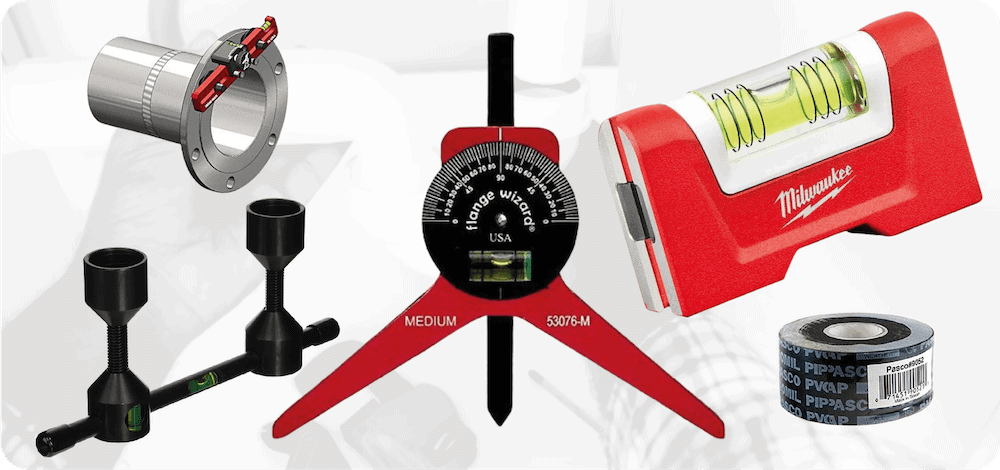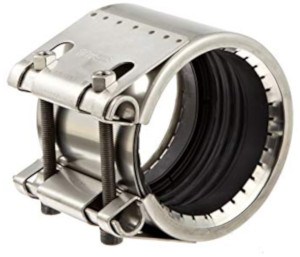The Essential Pipefitter Tools List: 12 Different Types & Their Uses
-
- Last updated:


Water leaks can cause all kinds of damage. Pipefitters are the people who keep them from happening. There is a wide variety of tools that pipefitters need to have before going out to fit or fix pipes. We are supplying you with a list of what those pipefitter tools are and what they are used for. Precise measurements are so important in pipe fitting that no one tool is really more important than the next. They are all important to getting the pipes to fit together.
The 12 Essential Tools Every Pipefitter Should Own:
1. Quality Control Welder’s Gauge
Pipefitters have a hard job. Their job requires knowing what kind of material is needed for each individual job, the exact dimensions of the pipes, and the precise angle at which the pipe should be bent. Any little errors can cause leakage issues. After the pipe has been fitted and welded together at its source, it is double-checked to make sure the angles are exactly right and that everything is aligned correctly. The quality control welder’s gauge is the tool that pipefitters use to check the quality of pipes, before they are fitted, to make sure that they can handle the job at hand.

2. Pipefitter’s Square
The standard angle that pipes are usually bent to at their source is either 45° or 90°. There are some jobs that require different angles, though. That is where the pipefitter’s square comes in. The square is used to make sure that the pipe is properly aligned.

3. Fitter Grips
Fitter grips are used to lock two pipes together while they are being welded one to the other. They are also used when welding a pipe to a joint.

4. Two-Hole Pin Pipe Fitting Tool
Two-hole pins are used to make sure two bolt holes are aligned to one another at the exact same height. The pins are lined up with the middle of the bolt holes. After they have been tightened down, the pipefitter will lay a level across the pins to make sure they are perfectly aligned.

5. Pipe Wraps
Pipe wraps are used to mark pipes before cutting. The wrap is put around the pipe, making sure that all edges are perfectly aligned where the wrap overlaps itself. Pipefitters then draw a line around the pipe with a sharp piece of soapstone. This ensures a straight cut on the pipe.

6. Magnetic Centering Heads
Magnetic centering heads are used to find the center line at any angle and mark it around the inside and the outside of a pipe.

7. Flange Aligners
Flange aligners are used to align joints before they are welded together. They are also used during routine maintenance to realign any joints that have somehow become misaligned. The tool is attached at the point of misalignment. It has vertical and horizontal level vial markers that show whether the pipes are properly aligned when workers are making adjustments.

8. Magnetic Flange Aligners
Magnetic flange aligners do the same job as flange aligners, but they are held in place by strong magnets.

9. Magnetic Pocket Level
The magnetic pocket level is a two-vial bubble tool that is attached to a pipe by magnets. The bubbles will show you whether the pipes are level before they are welded together.

10. Miter Marker Pipe Layout Tool
The miter marker pipe layout tool is magnetically attached to a pipe. There is a knob to adjust the angle at which to cut the pipe. There is a sharp piece of soapstone attached to the end of a long arm that swings down, marking one side of the pipe at the appropriate angle. The tool is then flipped over to mark the other side at the same angle without being moved. The miter marker will fit pipes from 1 ½ inches up to 18 inches.

11. Master Marker Pipe Layout Tool
The master marker pipe layout tool is the same as the miter marker, except that it will fit pipes up to 48 inches. The two different-sized arms will fit into the same body, so pipefitters don’t have to purchase two completely different tools.

12. Multi-Hole Imager
Our last essential pipefitter tool is the multi-hole imager. The multi-hole imager is a different arm that fits into the same base as the marker layout tools. It is used to mark where to cut holes. There is a long arm that slides up and down on a rod. There is a piece of soapstone on the end of the rod. Pipefitters set the angle that they want the hole cut at, then lift the soapstone to the top of the pipe and let it fall, marking the pipe where they want to cut.

Our other tools lists:
- The Essential Carpentry Tools List: 25 Different Types & Their Uses
- The Essential Home Inspection Tools
- The Essential Drywall Tools List: 17 Different Types & Their Uses
Related pages:
Featured Image Credit: Dennis Wise/University of Washington
Contents

